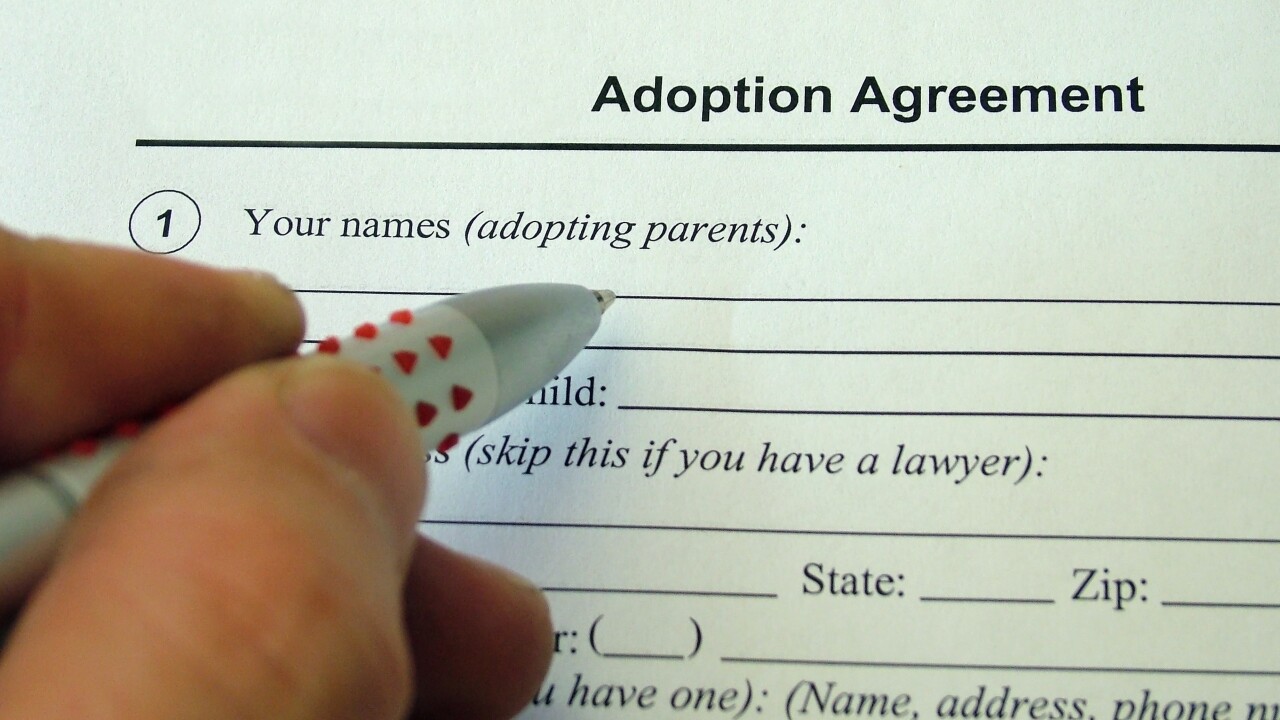The Affordable Care Act will continue to provide new surprises for tax preparers and taxpayers for the foreseeable future.
“Every year we’ll have something new as it relates to the ACA,” said Roger Harris, president of Padgett Business Services. “Last year, it was all new. This year, you start with the fact that the employer has more responsibility in terms of the coverage requirement and the shared responsibility payment they owe if they fail to provide coverage.”
“The good news is that practitioners don’t calculate the amount of the payment — the Internal Revenue Service will do that for them,” said Harris. “But they will probably be working with clients to make them aware of the penalty. They also have to worry about the Forms 1995-B and 1095-C reporting requirements. A taxpayer could get a Form 1095-A, Form 1095-B and Form 1095-C, or any combination of those. There are new forms, and more forms, and practitioners have to get used to asking for and understanding what the forms mean. Businesses and insurance companies have to get used to issuing those forms, and all of those will be new for both clients and practitioners.”
“The fact that the act is being implemented in stages means that every year there’s something new that we have to teach our clients and ourselves to be prepared for,” he added.
SURPRISE FOR EMPLOYERS
A key point for this year’s rules is that employers that have between 50 and 99 full-time employees, or FTEs, are exempt from the employer mandate for 2015 but are still required to file Form 1095-C, noted Nicole Bogard, who leads the employee benefits practice at the Atlanta office of Seyfarth Shaw LLP.
“This will sneak up on a lot of employers,” she explained. “They will be wondering how to capture all the information they need to report on these tax forms and who will do it for them.”
“If the employer is fully insured, then they are basically off the hook for providing the individual statements for employees, because the insurance company is responsible for providing those statements,” she said. “The individual employees will use those statements to demonstrate that they have complied with the individual mandate, but if you’re insured with at least 50 full-time employees, the employer still has the responsibility to file Form 1095-C to demonstrate that they satisfied the employer mandate.”
“If the employer has more than 250 returns that need to be filed, the employer will be required to file them electronically, so they will need to obtain the appropriate software,” she said. “This is all new software. We just helped one client find appropriate software. We gave the employer a list of six recommendations. It’s a lot of work to be done if the employer hasn’t begun the process.”
Form 1095-C is filed and furnished to any employee of an applicable large employer who is a full-time employee for one or more months of the calendar year. ALEs must report that information for all 12 months of the calendar year for each employee. Form 1095-C shows the coverage that was made available to an employee, while a separate form, Form 1095-B, gives details about an employee’s actual insurance coverage.
“Related employers within a controlled group need to be aggregated for determining the number of ‘full-time’ or ‘full-time equivalent’ employees employed by an ALE for the purpose of determining ALE status,” noted Bogard. “The final instructions refer to these corporate families as an ‘Aggregated ALE Group’ and each ALE within the Aggregated ALE Group as an ‘ALE Member.’”
“Each employer with a separate employer identification number that is an ALE or an ALE Member is responsible for reporting,” she said. “In some cases, related employers with separate EINs participate in the same self-funded group health plan. Despite having a single self-funded group health plan providing the coverage, Forms 1094-C and 1095-C will need to be completed for each employer EIN for the full-time employees of that employer. Each ALE will also need to report the names and EINs of other entities in the ALE’s controlled group on Form 1094-C.”
“Form 1095-C has to be sent out by Feb. 29, 2016, if they are on paper, or by March 31, 2016, if they are filed electronically,” Bogard continued. “They have to be provided to the employee by Feb. 1, 2016. It’s similar to W-2s in that they have to upload them to the IRS after they give them to their employees.”
W-2 PARALLELS
The Forms 1095-B [third-party insurers] and C [employers] are essentially to verify or get information on three things,” said Bill Smith, managing director of CBIZ MHM’s National Tax Office. “They provide information on the individual mandate penalty, the employer shared responsibility penalty, and whether or not the employee is eligible for premium tax credit or assistance in buying on the marketplace or exchange.”
“I like to compare it to Form 941 and W-2s,” he said. “Form 1095-C is what the employers send to their employees. They also have to tell the IRS what was in the information they sent with the W-2, and that’s done on the 941. Likewise, the employer sends the employee a 1095-C and sends the IRS a 1094-C that tells the IRS what was in the 1095-C.”
“With the 1095-C, you’re saying what kind of coverage you offered to your employees so they and the IRS can confirm whether you’re offering minimal essential coverage,” Smith explained. “If you don’t, then there are a couple of different things going on. If the cost is too expensive for the employee, he or she can be eligible for premium assistance in the marketplace, and if you’re not offering minimum essential coverage or it’s too expensive, you’re subject to the shared responsibility penalty.”
What makes it difficult for employers is the fact that they have to draw information from different sources in the company, Smith observed. “We offered a service to help employers do this. There was so much demand for it that we had to cut it off at the end of September. Now we’re trying to figure out how to help those who didn’t sign up early enough.”
“One of the interesting aspects of the ACA is that the individual mandate penalty has jumped up this year and gets pretty expensive next year,” Smith said. “For 2015, it’s $315 per adult and $162.50 per child or 2 percent of family income, whichever is greater, with a max of $975 per family. Next year it goes up to $695 per adult or 2.5 percent of family income, up to a max of $2,085. The individual mandate is starting to make its pain felt this year and next year, so it’s really an encouragement to get coverage. The penalty can be less than the premiums you have to pay, but bear in mind that then you won’t be getting
any coverage.”
CONSEQUENCES …
“For 2015, companies that have more than 50 full-time employees will have to report the number of employees to the IRS and show whether they are responsible for providing affordable care, or not,” said Sheila Clark, director of The Income Tax School. “They need to provide forms both to employees and to the IRS, to prove that they are meeting the requirements of the ACA. They also need to issue information to their employees to prove that they do have affordable care. If they don’t have coverage and they are required to have coverage, there is paperwork that needs to be completed.”
“If the employer does meet the requirement to provide health insurance to employees, they have to prove that they’ve offered it to at least 70 percent of their FTEs for 2015. Beginning in 2016, that goes up to 95 percent. For employers who do not offer coverage if they are required to do so, or who offer health insurance to fewer than the required percentage [70 percent in 2015, 95 percent in 2016 and after] and at least one of the full-time employees received the premium tax credit, the employer will be liable for the shared responsibility payment,” Clark said. “This is calculated by multiplying $2,000 times the number of full-time employees minus up to 30 employees.”
“Everyone is spending a lot of time getting up to speed on their reporting obligations after the first year of the employer mandate,” said Scott Austin, head of the healthcare reform initiative at Hunton & Williams. “One issue is employees who are variable, who are not clearly full-time employees and therefore who may not be eligible for coverage under their employer’s plan. In that case the employer is required to track the hours worked to determine if they are full-time employees or not. If they are, the employer is required to offer coverage or face potential penalties.”
There are two levels of potential penalties, Austin noted. “The first level is based on offering coverage to essentially all of the employer’s full-time employees [70 percent in 2015 and 95 percent in 2016]. Even if it does offer coverage to the required percentage, if it does not meet affordability requirements for certain employees and the employee gets coverage and a subsidy from an exchange, there’s a potential second level of penalty.”
Even if a new administration seeks to repeal the ACA, Austin believes it would be difficult to undo. “We could undo pieces of it,” he said. “We could eliminate some of the taxes and payments that are required under it. Some of the provisions have not yet taken effect, but so much has been around for several years that it would be difficult to unravel the entire thing.”
Of greater concern, he indicated, is whether the system is sustainable. “Will we be able to continue to fund it?” he said. “For example, the Cadillac tax [a 40 percent excise tax on high-cost employer-sponsored plans] isn’t effective until 2018, but it’s such a critical component in the funding of the act. If that is eliminated, how do you support the system financially?”





